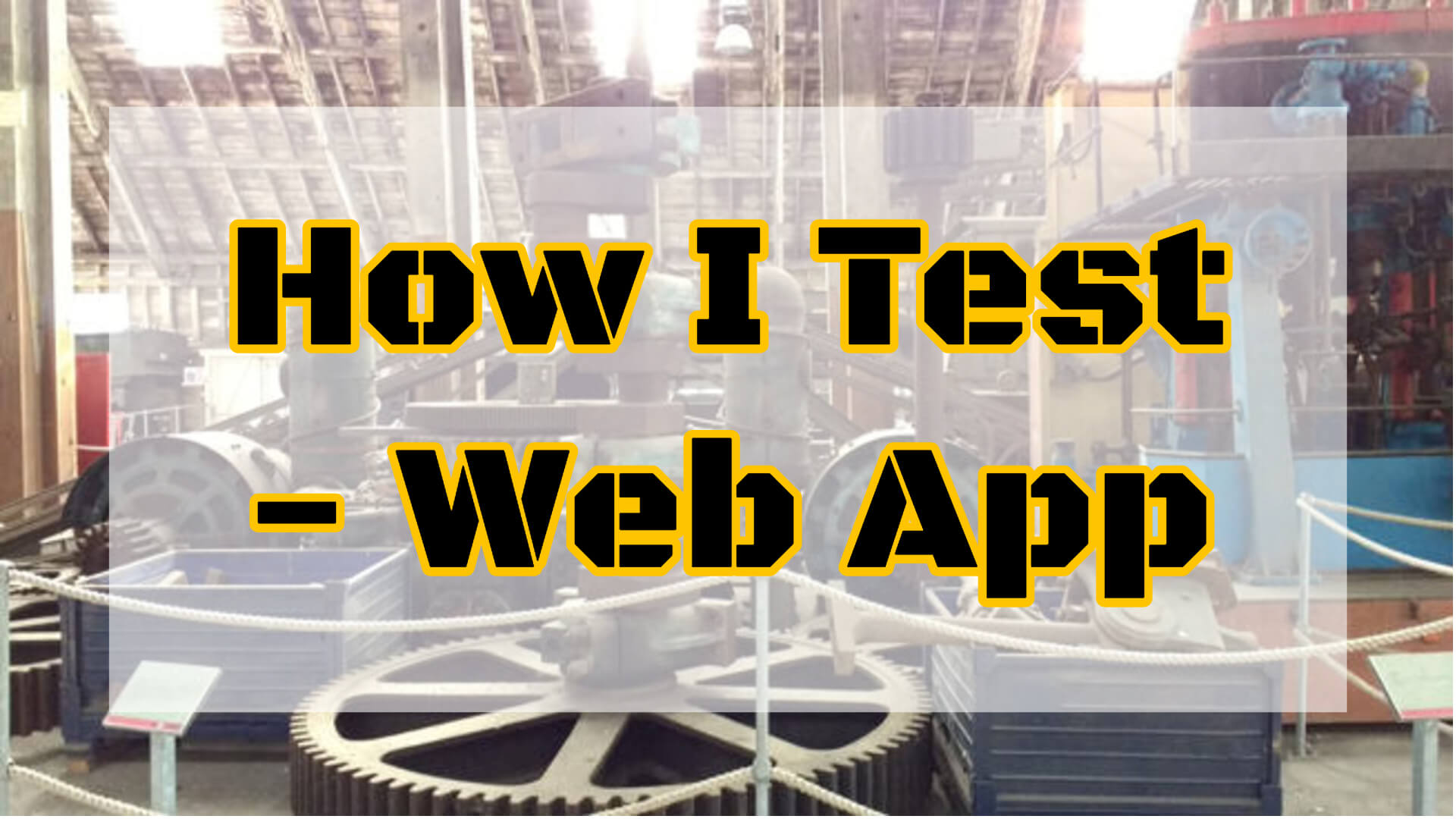A Patreon exclusive Micro course examining in detail a case study of How I Test.
In this case the course is looking at the exploratory testing of a web application and the choices made during testing.
Exclusively available to Patreon supporters. You can sign up to Patreon for only $1 a month and you’ll gain access to this course, as well as other exclusive courses and regular (often daily) tips, tutorials and advice on Software Development and Testing.
Blog Posts and Videos
You can find Slides and the Actual notes I made during testing on this page:
And more information in this blog post:
Contents
Introduction
- How I Test - Web App Case Study - Introduction
- An overview of the content and a high level description of my work.
- Debrief Intro
- A short, ’live’ intro to the course and the testing approach.
- Choosing the Right Person for the Job
- I chose an application. But I chose one that matches my skills and experiences. We choose the right person for the job, or we become the right person for the job we are doing.
- Choosing an Environment
- I chose the environment based on my anticipated needs for testing, and based on my experience. If we can’t manage our enviroments and if it restricts our testing, then that is a risk.
Install and Getting Started
- Install Session Debrief
- A debrief of my first install session.
- Releases and Deployments
- A description of my first session and the lessons learned for releases and deployments.
- Health Check Session Description
- A description of a health check session.
- Healthcheck Session Debrief
- A debrief of the healthcheck session, recorded very soon after the health check was performed. With demo of the app and additional nuance descriptions of the testing.
What to Test?
- Choosing What To Test - Intro
- An overview of test basis and using it to plan testing holistically.
- Why We Plan
- A slide based overview of why we plan - to know what to do, and what we have discounted. A short planning session can set us up for a long time.
- Planning to Test Holistically
- A meta analysis of the planning session with additional thoughts of how this fits into Agile Processes and how to evaluated projects for risks to help target your testing.
Recon Session
- What is a Recon Session
- An overview of a recon session and why we would perform one.
- Recon Session Debrief
- A debrief session conducted very soon after the testing to describe the results of the recon session. Highlights benefits of capturing evidence as we test. Also showing some examples of the system state constraints and testing performed based on the notes that I took. Explaining how my tooling was limiting my testing.
- Recon Session Meta Analysis
- Slide based overview of the recon session which is a short process to help us adjust our approach to better target the application.
Debrief Session
- Debrief Session
- A ’live’ debrief session looking at the exact notes taken. Recorded immediately after the debrief session.
- Debrief Meta Analysis
- Description of why debriefs are important and lessons learned from my note taking and debriefs.
Modelling Session
- Modelling And Planning Session Debrief
- An overview of my modelling and planning session recorded immediately after my modelling session. With a discussion of the model representations I used.
- An Overview and Lessons learned from Modelling
- An overview of the modelling process and why it is important, with lessons learned from this session and general modelling experience.
- Planning And Modelling Meta Analysis
- Discussion of my planning approach and how differences in approach and timing impact our planning depth.
Coverage Session
- Coverage Session Introduction
- An introduction to a coverage session where I am more focussed on coverage scope, than identifying new coverage and ideas through exploration.
- Coverage Session Debrief
- Explanation of the coverage session with a walkthrough of my notes and explanation of the tools used. Explaining the expansion of the coverage model during the session.
- Coverage Sessions Lessons Learned
- A summary of the lessons learned from a coverage system.
Issues and Tooling
- About Issues
- Examining the defect to think through when it might be found. The identification of the requirements and edge cases that would lead to the identification is an exploratory process.
- What drives tooling?
- People are often more interested in what tooling we use, than what process and thinking we use. But thinking through what drives our tooling choices is important.
Technical Exploratory Session
- Introduction to a Technical Exploratory Session
- An overview of an Exploratory Session and discussing the nuance of a Technical Exploratory Session
- Technical Exploratory Session Debrief
- Debrief recorded immediately after conducting a technical exploratory session, showing the tools used and why I used them.
- Technical Session Macro Summary and Lessons
- A high level overview of lessons learned from the technical session.
Conclusions
- Additional Activities
- What did I not do? Automating. Short description of how I would approach that. And additional lessons learned. Admin. Description of typical admin processes and how I would approach them.
- Basic Testing Flow Used
- An explanatory summary of the basic testing flow that I used in this process.
- Summary of Testing, Tooling, Bugs, Exploration and Coverage
- Looking back over all sessions and summarising key lessons learned.
- Final Notes
- Why the course was built the way it was and why I didn’t show the live test sessions. With an encouragement for you to test and identify your unique approach to testing.
Bonus:
- Practice Session Dev Fest 2019
- A 30 minute summary of the course content presented as a conference talk.







